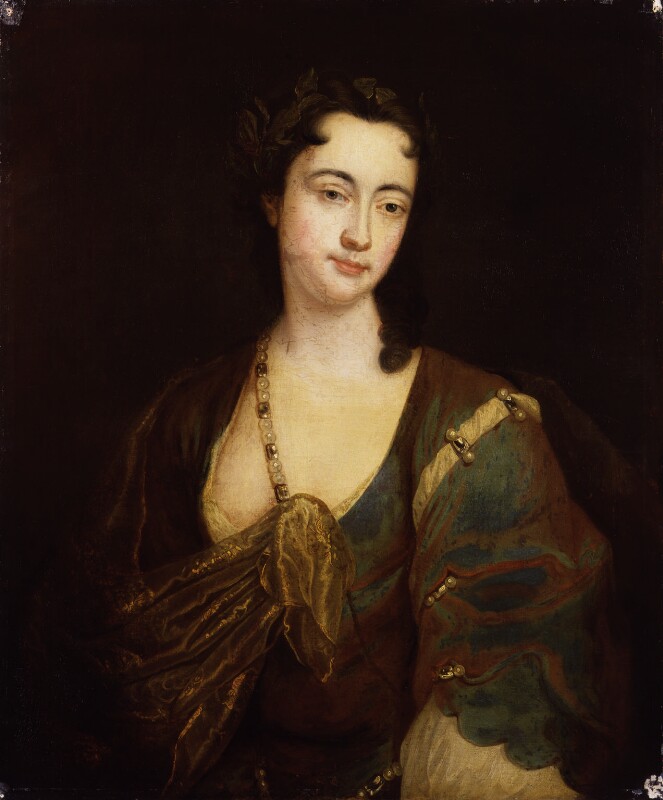
Most biographies begin at birth, this biography begins after death. Anne Oldfield was buried in Westminster Abbey in 1730, her grave is in the company of monarchs, poets laureate, and military heroes [1]. Even in death, she was remembered as the greatest actress of all time, a national treasure who was eulogised in a six-volume biography in the same year [2].
By Sam Bailey
In the 21st century, veteran performers such as Judi Dench and Helen Mirren are figures of national pride and figureheads for their profession, actresses represent humanitarian organisations such as the United Nations and Save the Children and are treated as role models for children to emulate. In Oldfield’s time, acting was not so universally acclaimed; actresses were viewed similarly to sex workers, selling their bodies to perform in front of ogling men in licentious and rowdy theatres. There had only been one generation of English actresses before Oldfield, as women were first allowed to perform professionally in 1660, and the morality of such women was continually disputed throughout her life. Oldfield’s life begs the question, how did a woman in such a morally suspect profession come to be buried alongside the Kings and Queens of England?
The answer to this question would be simpler if Oldfield’s rise to fame was not so inexplicable. Anne Oldfield was born in 1683 to a family in possession of a number of London properties that her father mortgaged early in her life. After her father’s death, Anne and her mother (also Anne) were put into the care of, first, her uncle George (who paid for her schooling) and later, Mrs. Voss who owned the Mitre Tavern in St James [1]. It was while lodging at this tavern that, according to her 18th-century biographers, Oldfield was ‘discovered’ by the playwright George Farquhar who witnessed her reading a play aloud behind the bar [3]. Her talent was such that Farquhar was compelled to introduce her to his friends in the theatre. Oldfield was 16 at the time and was quickly enlisted into John Rich’s company (one of London’s two theatre companies) as an actress on 15s a week (slightly higher than the pay of a skilled tradesman, but a low wage for a performer)[1]. Whether this story is true is questionable: it is a convenient legend that was only reported in the years after Oldfield’s death. However, there is no other account of Oldfield’s discovery, and regardless of the specifics, it shows that her debut in the theatre was due to a combination of abundant talent and random chance.
Oldfield quickly established herself as a professional actress. She first appeared in a production of John Dryden’s Secret Love as Candiope, a secondary role, in 1699. In her first season, she was given only one other role, Sylvia in John Oldmixon’s The Grove [4]. Despite a disappointing debut, Oldfield must have caught the attention of audiences as a production of John Fletcher’s The Pilgrim was performed solely for her benefit [1]. While only 17, Oldfield had a particularly good year in 1700, performing two prologues as well as meeting Susannah Centlivre, a playwright who would become a lifelong collaborator. In 1701, Oldfield began collaborating with Catharine Trotter, appearing in Love at a Loss as Lucilia and in The Unhappy Penitent as Ann of Brittanie [5]. While her appearance in The Unhappy Penitent was early in her career, even by this point Oldfield had displayed a broad repertoire, excelling as both a comic and tragic actress. It was this variety that made Oldfield a truly exceptional actress, who could be entrusted with a starring role in almost any genre of theatre.
Oldfield formally joined Rich’s Company by verbal contract in 1704. The quality of Oldfield’s contract speaks to her shrewd negotiating skills. She was earning 50s a week for five years with a guarantee of starring roles such as Victoria in Richard Steele’s The Lying Lover and Queen Mary in John Banks’ The Albion Queens. By the time Rich’s Company reorganised in 1706 Oldfield was earning 13s 5d for every play in which she appeared and was on stage every evening. Oldfield was prepared to stake her reputation and career on consistently upping her pay. After a dispute with John Rich over wages in 1709, she briefly worked at the rival Haymarket Theatre on an annual salary of £200, making her by far the best-paid actress in England. Rich won her back in 1711, offering her pay between £200-£300 a year and a managing partnership in the company [1]. The return to Rich put Oldfield on par with male actors both in her pay and her influence over the theatre. Before turning 30 Oldfield had become one of the most influential figures on the English stage, leveraging her talent and popularity to negotiate her way to equal standing with her male colleagues.
By the end of her life, Oldfield had a personal wealth of approximately £15,000 and owned a newly built townhouse on the fashionable Grosvenor Street (at which a Blue Plaque commemorates her life) [1]. According to the catalogue of an auction following her death, her house had 18 rooms as well as a yard and stable (in which she kept a carriage and horses), 13 beds (which were the most expensive item in an English home), a 218 volume collection of plays, 29 mirrors, 144 silver plates, 103 paintings, 106 items of furniture (including furniture imported from Japan and South-East Asia) and £11,000 worth of jewelry. All of these items, including the house, were acquired by Oldfield as she had inherited almost nothing from her parents [6]. Oldfield lived like an aristocrat, and wielded the economic power of an oligarch, yet made her enormous wealth solely from her work in the theatre. In the 21st century, the idea that an actress might be the wealthiest woman in England would not be surprising, but Oldfield was the first self-made woman to reach that level of wealth and power.
Oldfield’s celebrity status relied upon her conspicuous consumption. Her popularity as a glamorous star of the stage could not only make or break a play, it allowed her to commodify herself through merchandise. Prints of Oldfield’s portrait were sold to adoring fans through her life and well after her death. Oldfield was so fashionable that she was able to create new trends based upon what she wore on stage and what she bought for her home. Like a modern-day influencer accepting sponsorships from chic new brands, tradesmen were desperate for Oldfield to display their wares in the hope that they would become the foundation of a trend. Insisting that she wear her own jewelry on stage, she benefitted from an early form of brand sponsorship [6]. Oldfield is often cited as the first professional actress, but her influence over fashionable society demonstrates she was also one of the first professional celebrities.
Throughout her career, Oldfield had to compete with interest in her sex life and questions regarding her virtue. Oldfield had two significant relationships with men in her life. Her first suitor, Arthur Mainwaring, was an MP for Preston who supported her career wholeheartedly and wrote several epilogues for her. Mainwaring and Oldfield had a son and daughter together, who would between them go on to receive the majority of Mainwaring’s inheritance. Following Mainwaring’s death in 1712, Oldfield began an affair with Charles Churchill, a minor aristocrat with whom Oldfield had another son, much to the chagrin to the press, who were scandalised by Oldfield’s disregard for the restraint expected of women [1]. Sexual scandal was an occupational hazard for an actress in the eighteenth century, the presence of a woman on stage was a provocation, so in order to be taken seriously, Oldfield needed to devise strategies to overcome this. Through her peerless talent, she was able to create a new model of virtue based upon an actress’s professional skill [7]. Oldfield shifted the perception of actresses by showing that acting required supreme skill and that professional competence would be rewarded by audiences. While she never fully escaped the mark of the whore, her work became a moral purgative that would set an example for future generations of performers.
Returning to the original question of Oldfield’s burial at Westminster, it should be clear now just how powerful Oldfield became by the end of her life. It’s tempting to attribute her success solely to her talent as an actress which appears innate and unparalleled, but this would ignore how she actually moved through her career. If Oldfield had not been in St James’ on the day George Farquhar was recruiting actresses for the Rich company, she may never have made it to the stage in the first place. If she was not so shrewd a negotiator, she may have been relegated to secondary roles and a standard wage. If she was not aware of her public persona, she may not have cultivated value as a celebrity and as a maker of taste. Oldfield’s success is due to her ability to market herself, exploiting her reputation as a performer and a woman to reach stratospheric heights. Oldfield’s burial at Westminster marks a shift in the perception of actresses that Oldfield created. Her career legitimised actresses and enabled generations of women to pursue acting as a professional career. Without Oldfield, there would be no great English actresses, and for that, she is clearly “sole empress of the stage” [8].
[1] Milling, J. Oldfield, Anne (1683-1730), Oxford Dictionary of National Biography, 2004, https://doi.org/10.1093/ref:odnb/20677. RETURN TO DOCUMENT
[2] Unknown Author. Authentick memoirs of the life of the celebrated actress Mrs. Anne Oldfield, London, 1730. RETURN TO DOCUMENT
[3] Egerton, William [Edmund Curll]. Faithful memoirs of the life, amours and performances, of that justly celebrated, and most eminent actress of her time, Mrs. Anne Oldfield, London, 1741. RETURN TO DOCUMENT
[4] Cibber, Colley. An Apology for the Life of Colley Cibber, London, 1740. RETURN TO DOCUMENT
[5] Trotter, Catharine. The Unhappy Penitent, London, 1701. RETURN TO DOCUMENT
[6] Hensbergen, Claudine van. ‘Anne Oldfield’s Domestic Interiors: Auctions, Material Culture and Celebrity’. Intimacy and Celebrity in Eighteenth-Century Literary Culture, ed. E. Jones and V. Joule, Palgrave Macmillan, 2018. RETURN TO DOCUMENT
[7] Nussbaum, Felicity. ‘Actresses’ Memoirs: Exceptional Virtue’. Rival Queens: Actresses, Performance, and the Eighteenth-Century British Theater, University of Pennsylvania Press, 2010. RETURN TO DOCUMENT
[8] Oldys, William. The History of the English Stage, London, 1741. RETURN TO DOCUMENT
